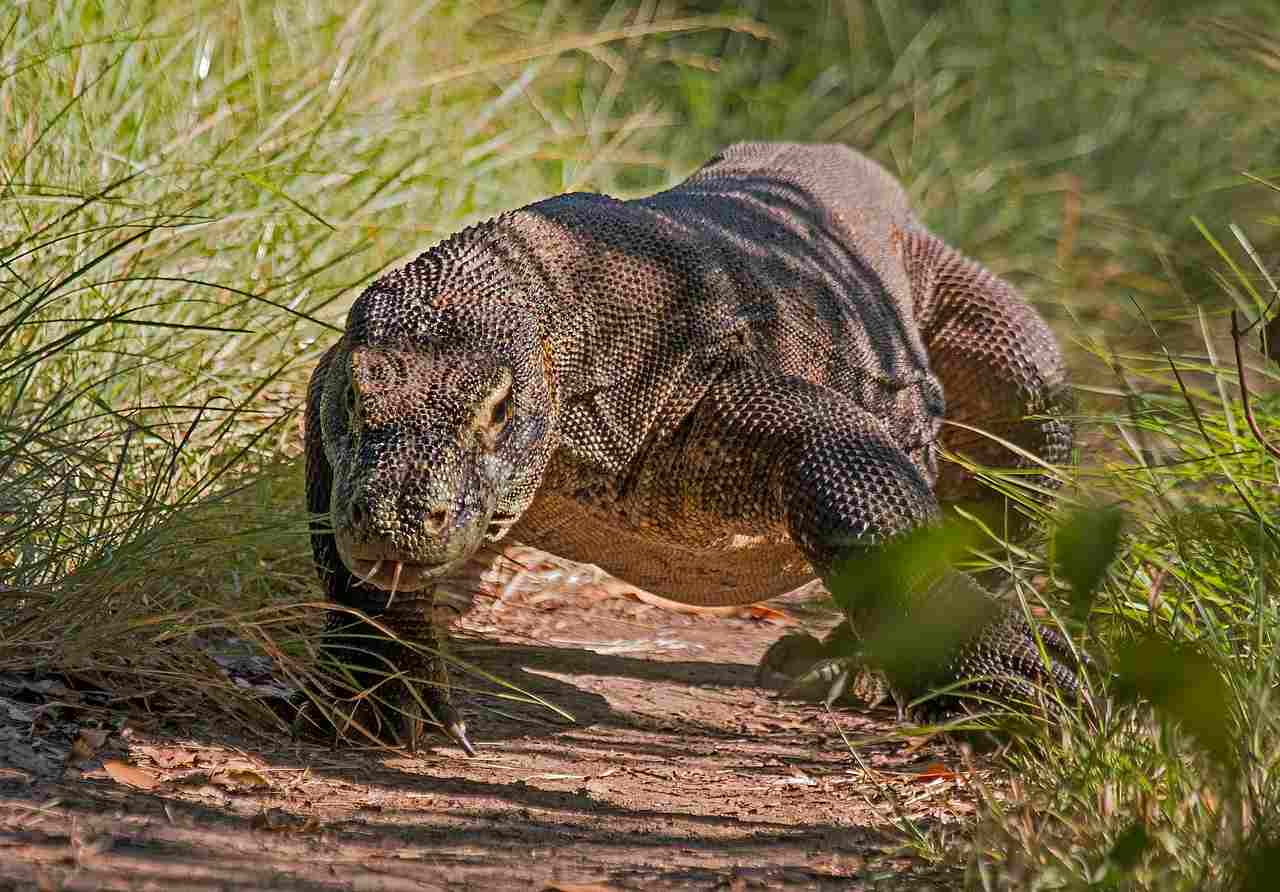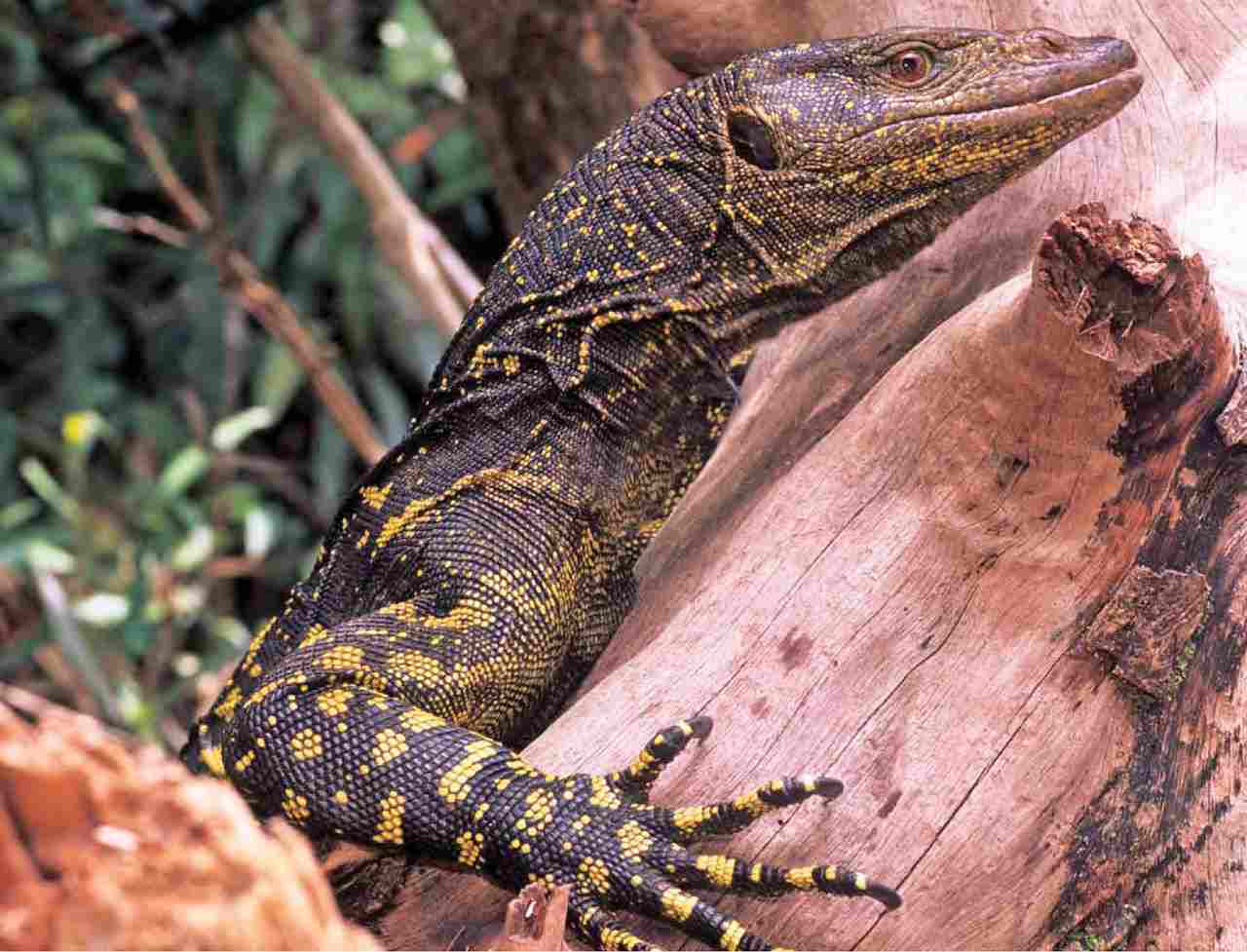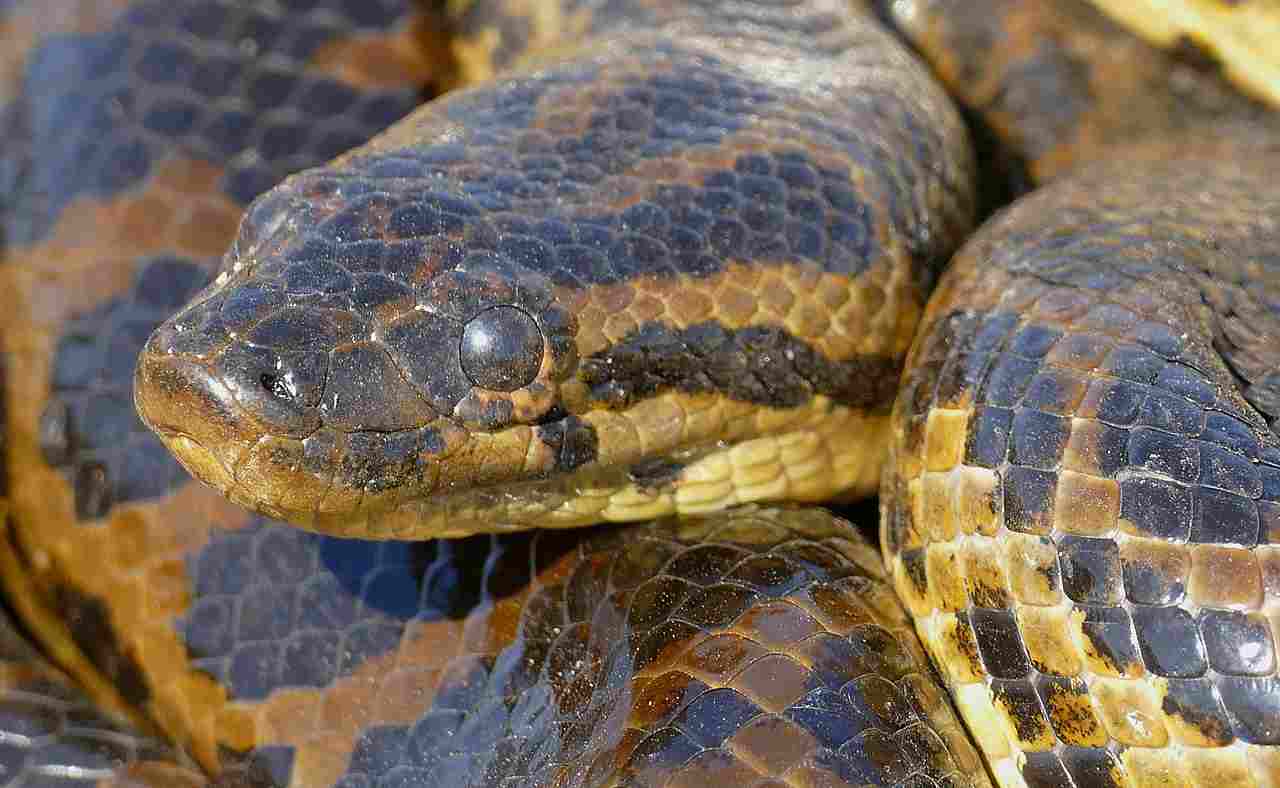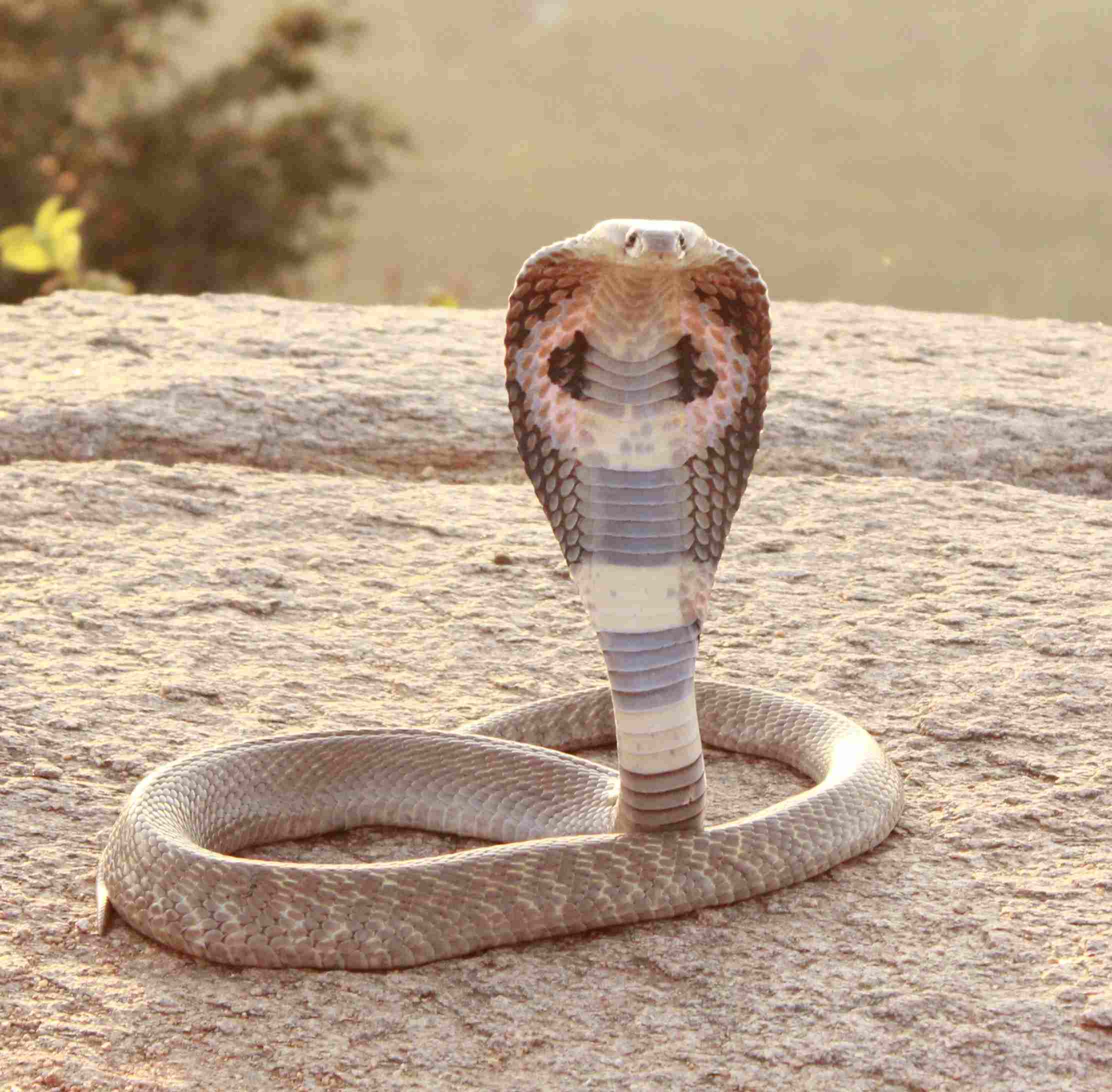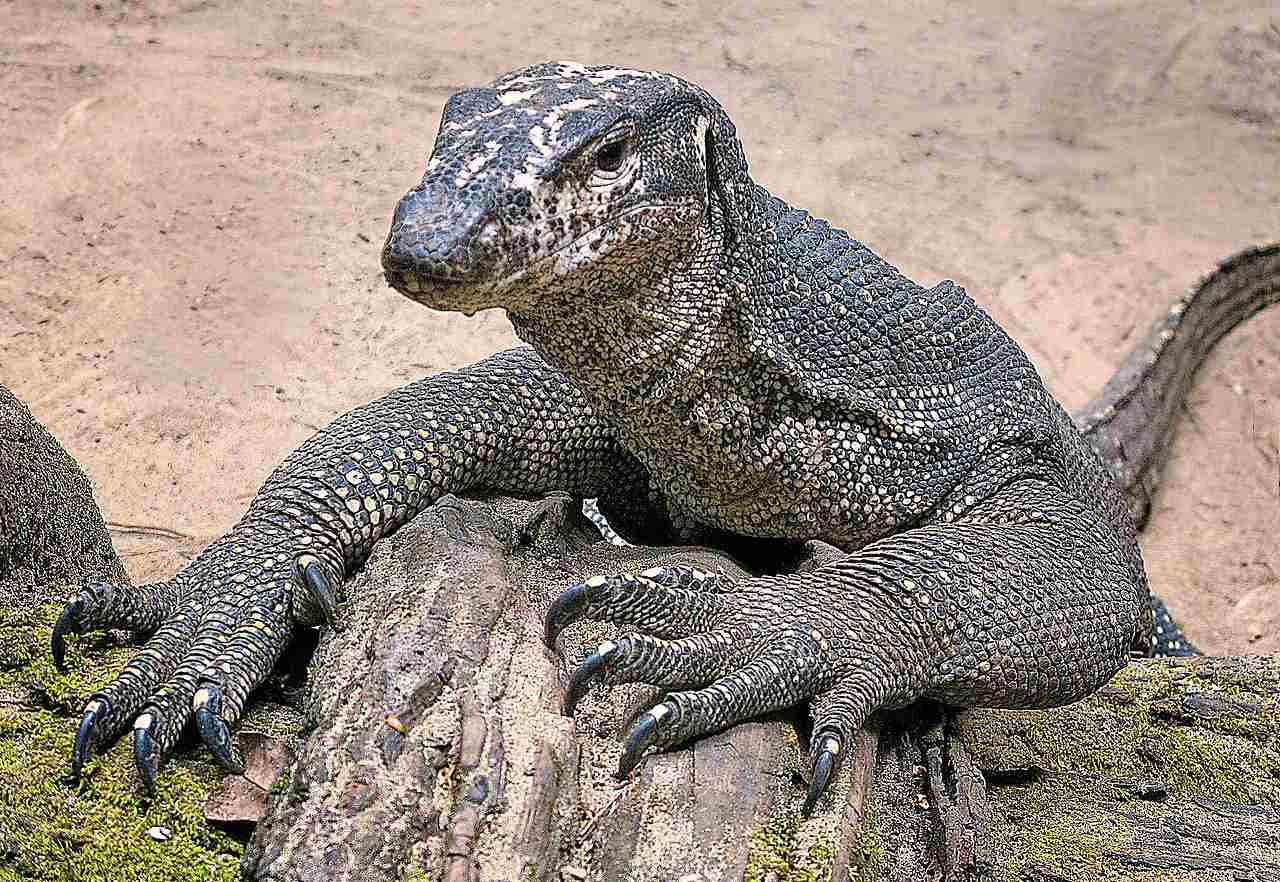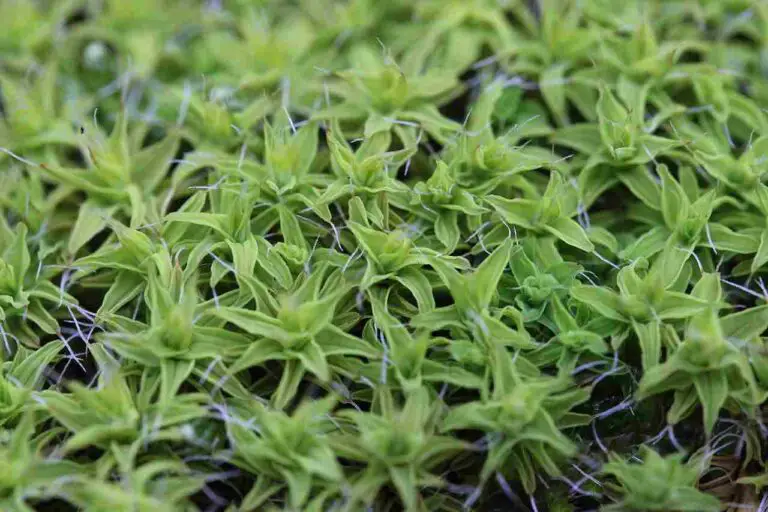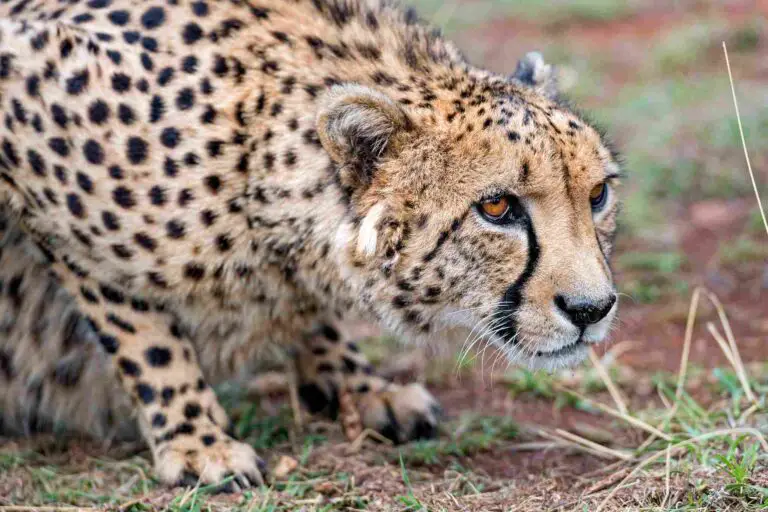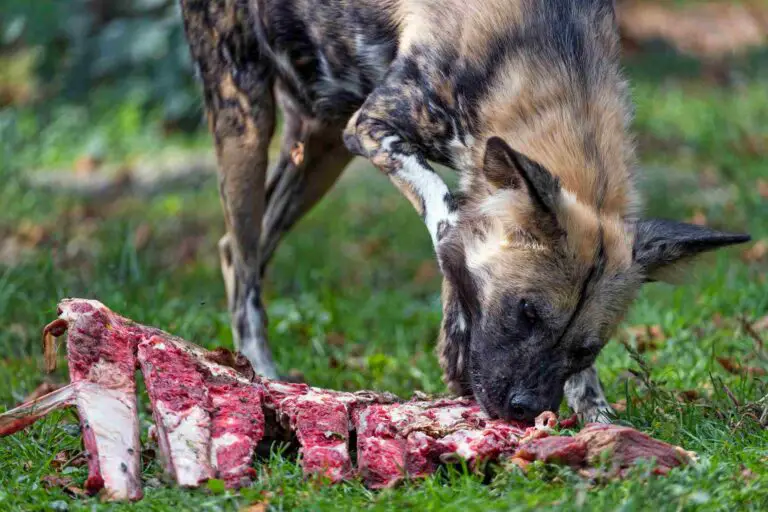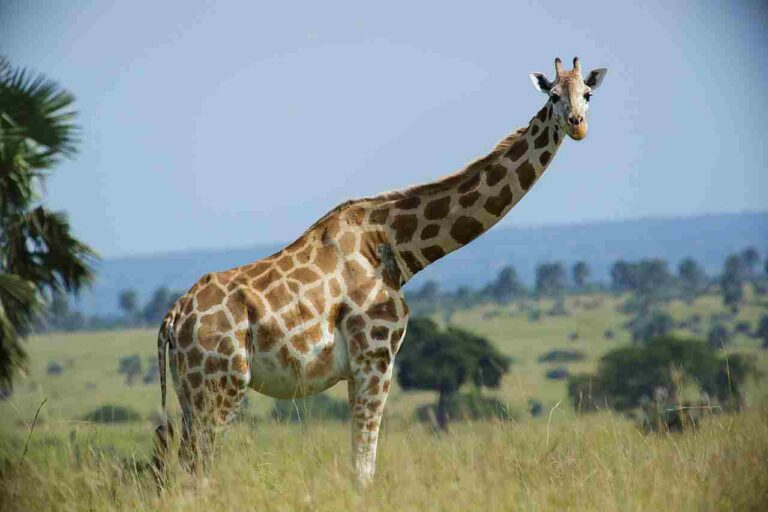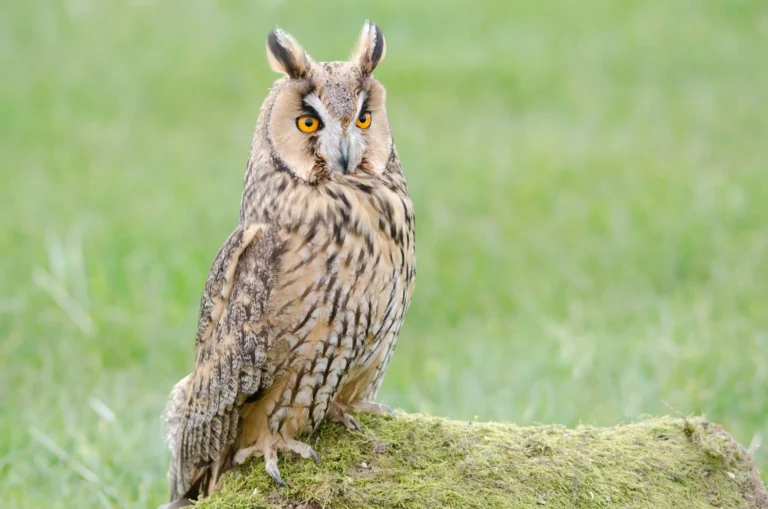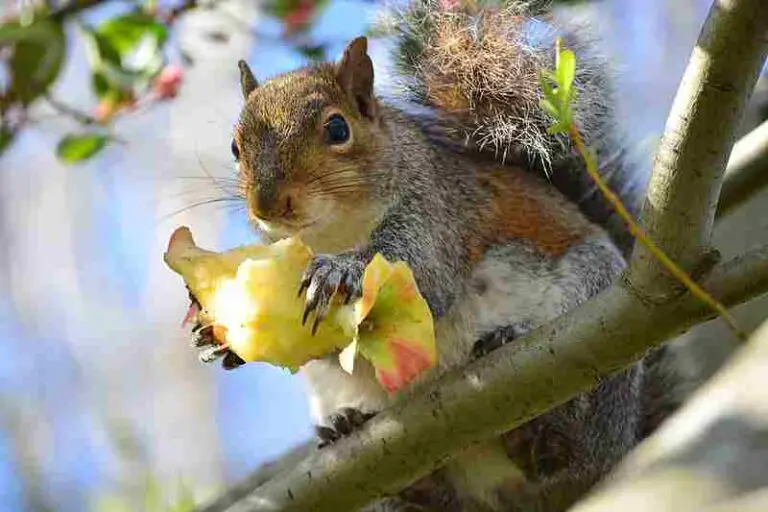Are Lizards Carnivores? Overview of Lizard Diet and Feeding Habits
Carnivorous lizards make up the majority of the lizard population, as they primarily feed on a wide range of prey. The diet of a lizard depends on its size and predatory adaptations. For instance, geckos mainly consume insects, while larger lizards like Komodo dragons can even prey on large ungulates.
Examples of carnivorous lizards include both insectivorous species and those that feed on flesh. However, it is important to note that there are also a few species of lizards that are herbivorous or omnivorous, but they are in the minority. These lizards have adapted to consume plant matter or a combination of plant and animal-based food sources.
Why Most Lizards are Carnivores
1). Difficulty of Plant-tissue Digestion
Many lizards can hardly digest cellulose in plant matter due to their digestive system not being adapted for it. This difficulty in digesting plant-tissue is one of the reasons why most lizards are carnivores.
Lizards have a relatively short digestive tract, which limits the time available for the breakdown of complex carbohydrates like cellulose. Additionally, their stomachs lack the necessary enzymes to efficiently break down plant matter. As a result, lizards struggle to extract nutrients from plant-tissue, making a carnivorous diet more suitable for their digestive capabilities.
The inability to digest plant-tissue also influences the types of habitats where lizards thrive. Lizards are commonly found in arid and semiarid regions with little to no plant cover. These barren landscapes provide an abundance of small prey, such as insects and other invertebrates, which are easier for lizards to digest and extract nutrients from.
2). Adaptation to Barren Landscapes
Many lizard species have evolved in arid and semiarid areas with little to no plant cover. This adaptation to barren landscapes is one of the reasons why most lizards are carnivores.
In these harsh environments, vegetation is scarce, making it difficult for lizards to find enough plant matter to sustain themselves. As a result, they have had to adapt to rely on animal-based food sources, such as insects, small mammals, and other reptiles.
The lack of plant cover also means that lizards have fewer places to hide and seek shelter. This has led to the development of various predatory features that make them efficient hunters. Lizards have evolved specialized physiology, including sharp claws, teeth, and jaws, which are best suited for capturing and consuming prey.
Their ability to blend into their surroundings and their exceptional speed and agility further enhance their hunting capabilities. These adaptations allow lizards to effectively locate and capture their prey in the open, barren landscapes they inhabit.
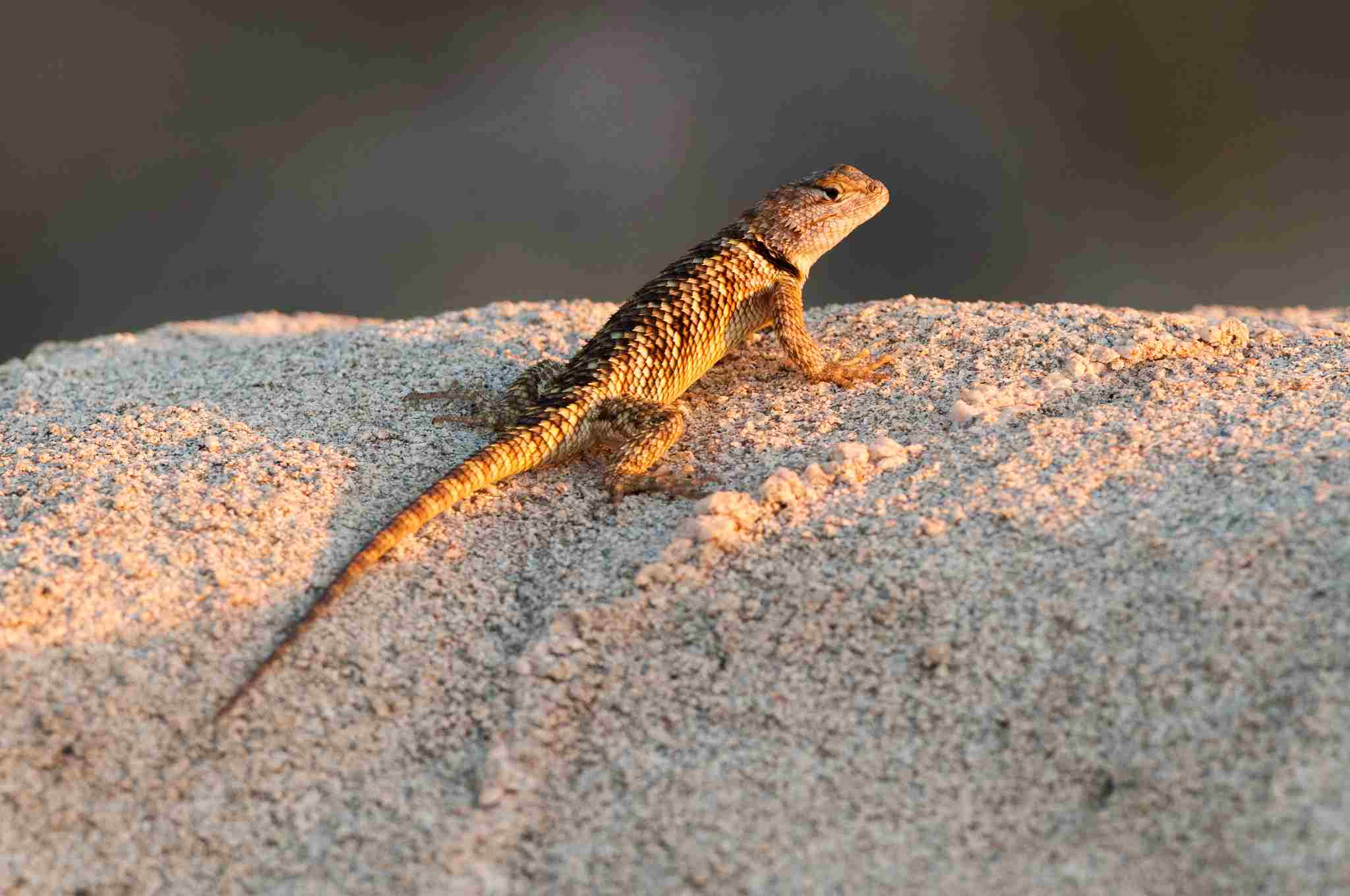
3). Dominance of Predatory Features
The dominance of predatory features in lizards is a key reason why most of them are carnivores. Lizards have evolved specialized physiology, including sharp claws, teeth, and jaws, that are perfectly suited for capturing and consuming prey. These adaptations enable them to effectively locate and capture their food sources, which are primarily animal-based.
The sharp claws of lizards allow them to grip and hold onto their prey, preventing it from escaping. Their teeth are designed to tear and shred the flesh of their prey, facilitating easier consumption. Additionally, lizards have powerful jaws that enable them to deliver a strong bite, ensuring a quick and efficient kill.
These predatory features have evolved over time to meet the specific dietary needs of lizards. By having these adaptations, lizards are able to thrive in their natural habitats where plant matter is scarce. Instead, they rely on insects, small mammals, and other reptiles as their primary sources of nutrition.
Are Lizards Omnivores?
Yes, some lizards are omnivorous, meaning that they have a diet that consists of both plant matter and animal prey. These omnivorous lizards exhibit a flexible feeding behavior, allowing them to consume a variety of food sources depending on availability. Their omnivorous behavior often results from their adaptation to unstable food supply conditions in their natural habitats.
Examples of omnivorous lizards include agamid and iguanid species such as the Argentine Black and White Tegu, Rhacodactylus Geckos, Bearded Dragon, and Blue-Tongued Skink. These lizards have evolved to take advantage of a wide range of food sources, including insects, small mammals, fruits, vegetables, and even carrion.
The Argentine Black and White Tegu, for instance, is known for its ability to consume both plant matter and small animals. Rhacodactylus Geckos have a diverse diet that includes insects, fruits, and nectar. Bearded Dragons are opportunistic feeders, consuming both insects and plant material. Blue-Tongued Skinks have a broad diet that includes insects, snails, fruits, and vegetation.
The omnivorous behavior of these lizards allows them to adapt to different environments and survive in areas where food availability may vary. By being opportunistic in their feeding habits, these lizards can take advantage of a wide range of food sources, ensuring their nutritional needs are met.
Why Some Lizards are Omnivorous
1). Relatively High Ecological Adaptability
Relatively high ecological adaptability is one of the key reasons why some lizards are omnivorous. Lizards with this trait have the ability to adjust their diet based on the availability of food sources in their environment. This adaptability allows them to survive in various habitats, including those with unstable food availability.
In times of scarcity, when their preferred prey is scarce, omnivorous lizards can switch to consuming a wider range of food items, including plant matter, fruits, and even carrion. This flexibility in their diet helps them to maintain their energy levels and survive during challenging times.
2). Unstable Food Availability
Unstable food availability is a significant factor that contributes to why some lizards are omnivorous. In certain semiarid areas, the availability of a single food source may not be reliable. This lack of consistency in their primary prey forces these lizards to adapt and diversify their diet. By incorporating a variety of food sources, including both animal and plant matter, omnivorous lizards can increase their chances of finding sustenance in unpredictable environments.
This flexibility allows them to survive and thrive in habitats where food resources may be scarce or sporadic. Additionally, the ability to consume a wider range of food items provides these lizards with a nutritional advantage, ensuring they can meet their energy requirements even when their preferred prey is scarce. The omnivorous nature of these lizards is a direct response to the challenges posed by unstable food availability.
3). Opportunistic Behavior
The opportunistic behavior of some lizards arises from their adaptability and food insecurity. In unpredictable environments where food availability is unstable, these lizards have developed the ability to take advantage of various food sources. By being opportunistic in their feeding habits, they can maximize their chances of finding sustenance and meeting their energy requirements.
This opportunistic behavior allows omnivorous lizards to thrive in habitats where food resources may be scarce or sporadic. They are not limited to a specific diet and can consume both animal and plant matter as needed. This flexibility gives them a nutritional advantage, ensuring their survival even when their preferred prey is scarce.
Examples of opportunistic omnivorous lizards include the chuckwalla and the blue-tongued skink. These lizards have adapted to their environment by being opportunistic feeders, allowing them to survive and thrive in challenging conditions.
Are Lizards Herbivores?
Yes, lizards like iguanas can be herbivorous, which implies that they primarily consume plant matter. These lizards gain their energy and nutrients from a variety of vegetation, such as leaves, fruits, flowers, and even algae. Their digestive systems have adapted to efficiently process and extract nutrients from plant material.
Examples of herbivorous lizards include the chuckwalla and the green iguana. Chuckwallas are known for their preference for desert plants, while green iguanas have a broader diet that includes fruits, flowers, and leaves. These lizards have specialized teeth and jaws that allow them to efficiently chew and process plant matter.
Being herbivorous provides these lizards with a unique ecological niche, as they play a crucial role in seed dispersal and plant pollination. Their feeding habits contribute to the overall balance and diversity of ecosystems.
Herbivorous Lizards: Overview of Lizards that Eat Plants and/or Other Producers
Herbivorous lizards tat eat plants and other producers include; chuckwalla, green iguana, rhinoceros iguana, uromastyx, black spiny-tailed iguana, Fiji-banded iguana, and blue-tongued skink.
Below is a brief discussion of each example listed above;
1). Chuckwalla
The chuckwalla is a fascinating lizard species known for its herbivorous diet. This plant-eating lizard primarily feeds on various types of vegetation, making it a herbivore. With its specialized digestive system, the chuckwalla is able to efficiently process plant material for nutrition.
One of the reasons why the chuckwalla is able to thrive on a plant-based diet is its ability to digest plant tissues. Unlike some other lizards, the chuckwalla has adaptations that allow it to break down and extract nutrients from tough plant fibers. This enables it to obtain the necessary energy and nutrients from the plants it consumes.
The chuckwalla’s herbivorous nature is also influenced by its habitat. These lizards are commonly found in arid regions with limited food resources. In such barren landscapes, plant material is often more abundant and accessible compared to animal prey. This makes a herbivorous diet a more viable option for survival.
2). Green Iguana
The green iguana is a well-known herbivorous lizard species that primarily feeds on plants. With its specialized digestive system, the green iguana is able to efficiently process plant material for nutrition. This lizard has a strong jaw and sharp teeth that are adapted for tearing and chewing plant matter.
One of the reasons why the green iguana is a herbivore is its relatively high ecological adaptability. It can thrive in various habitats, including forests, savannas, and even urban areas, where it can find a wide range of plant food sources. The green iguana’s diet mainly consists of leaves, flowers, fruits, and even some vegetables.
Another factor that influences the green iguana’s herbivorous nature is the unstable availability of food. In some environments, the abundance of plant resources fluctuates seasonally, making a herbivorous diet more advantageous for survival. The green iguana has adapted to these conditions by developing a preference for plant-based foods.
3). Rhinoceros Iguana
The rhinoceros iguana is a fascinating herbivorous lizard species that primarily feeds on plants. With its specialized digestive system, this lizard has adapted to efficiently process plant material for nutrition. The rhinoceros iguana possesses a strong jaw and sharp teeth, which are perfectly suited for tearing and chewing plant matter.
One of the reasons why the rhinoceros iguana is a herbivore is its relatively high ecological adaptability. It can thrive in various habitats, including rocky areas and coastal regions, where it can find a diverse range of plant food sources. The rhinoceros iguana’s diet mainly consists of leaves, flowers, fruits, and even cacti.
Another factor that influences the rhinoceros iguana’s herbivorous nature is the unstable availability of food. In certain environments, the abundance of plant resources fluctuates seasonally, making a herbivorous diet more advantageous for survival. The rhinoceros iguana has adapted to these conditions by developing a preference for plant-based foods.
4). Uromastyx
The Uromastyx is a fascinating herbivorous lizard that primarily feeds on plants. This plant-eating lizard has a specialized digestive system that allows it to efficiently process plant material for nutrition. With its strong jaw and sharp teeth, the Uromastyx is well-equipped to tear and chew plant matter.
One of the reasons why the Uromastyx is a herbivore is its relatively high ecological adaptability. It can thrive in various habitats, including arid regions, where it can find a diverse range of plant food sources. The Uromastyx’s diet mainly consists of leaves, flowers, and fruits.
The herbivorous nature of the Uromastyx is also influenced by the unstable availability of food. In certain environments, the abundance of plant resources fluctuates seasonally, making a herbivorous diet more advantageous for survival. The Uromastyx has adapted to these conditions by developing a preference for plant-based foods.
5). Black Spiny-tailed Iguana
The Black Spiny-tailed Iguana is a fascinating herbivorous lizard that primarily feeds on plants. As its name suggests, this lizard has a spiny tail, which serves as a defense mechanism against predators. With its strong jaws and sharp teeth, the Black Spiny-tailed Iguana is well-equipped to tear and chew plant material.
One of the reasons why the Black Spiny-tailed Iguana is a herbivore is its relatively high ecological adaptability. It can thrive in various habitats, including arid regions, where it can find a diverse range of plant food sources. The Black Spiny-tailed Iguana’s diet mainly consists of leaves, flowers, and fruits.
The herbivorous nature of the Black Spiny-tailed Iguana is also influenced by the unstable availability of food. In certain environments, the abundance of plant resources fluctuates seasonally, making a herbivorous diet more advantageous for survival. The Black Spiny-tailed Iguana has adapted to these conditions by developing a preference for plant-based foods.
In addition to its herbivorous diet, the Black Spiny-tailed Iguana also plays an important role in seed dispersal. As it consumes fruits and vegetation, it inadvertently spreads seeds through its droppings, contributing to the growth and regeneration of plant populations in its habitat.
6). Fiji-banded Iguana
The Fiji-banded Iguana is a fascinating herbivorous lizard that primarily feeds on plants. As its name suggests, this lizard is known for its distinctive banded pattern, which provides camouflage in its natural habitat. With its specialized teeth and jaws, the Fiji-banded Iguana is well-adapted to consume plant material.
One of the reasons why the Fiji-banded Iguana is a herbivore is its preference for plant-based foods. It has a varied diet that includes leaves, flowers, fruits, and even some succulent plants. This allows the lizard to obtain the necessary nutrients for its survival and growth.
The herbivorous nature of the Fiji-banded Iguana is also influenced by its habitat. It is found in the tropical forests of Fiji, where there is an abundance of plant resources. The lizard has evolved to take advantage of this environment by developing specialized digestive systems to process plant matter efficiently.
In addition to its herbivorous diet, the Fiji-banded Iguana plays a crucial role in seed dispersal. As it consumes fruits and vegetation, it helps to spread seeds through its droppings, contributing to the regeneration of plant populations in its ecosystem.
7). Blue-tongued Skink
The Blue-tongued Skink is a fascinating herbivorous lizard that primarily feeds on plants. As its name suggests, this lizard is known for its distinctive blue tongue, which it uses as a defense mechanism to deter predators. With its specialized teeth and jaws, the Blue-tongued Skink is well-adapted to consume plant material.
One of the reasons why the Blue-tongued Skink is a herbivore is its preference for plant-based foods. It has a varied diet that includes fruits, flowers, leaves, and even some succulent plants. This allows the lizard to obtain the necessary nutrients for its survival and growth.
The herbivorous nature of the Blue-tongued Skink is also influenced by its habitat. It is found in various regions of Australia, where there is an abundance of plant resources. The lizard has evolved to take advantage of this environment by developing specialized digestive systems to process plant matter efficiently.
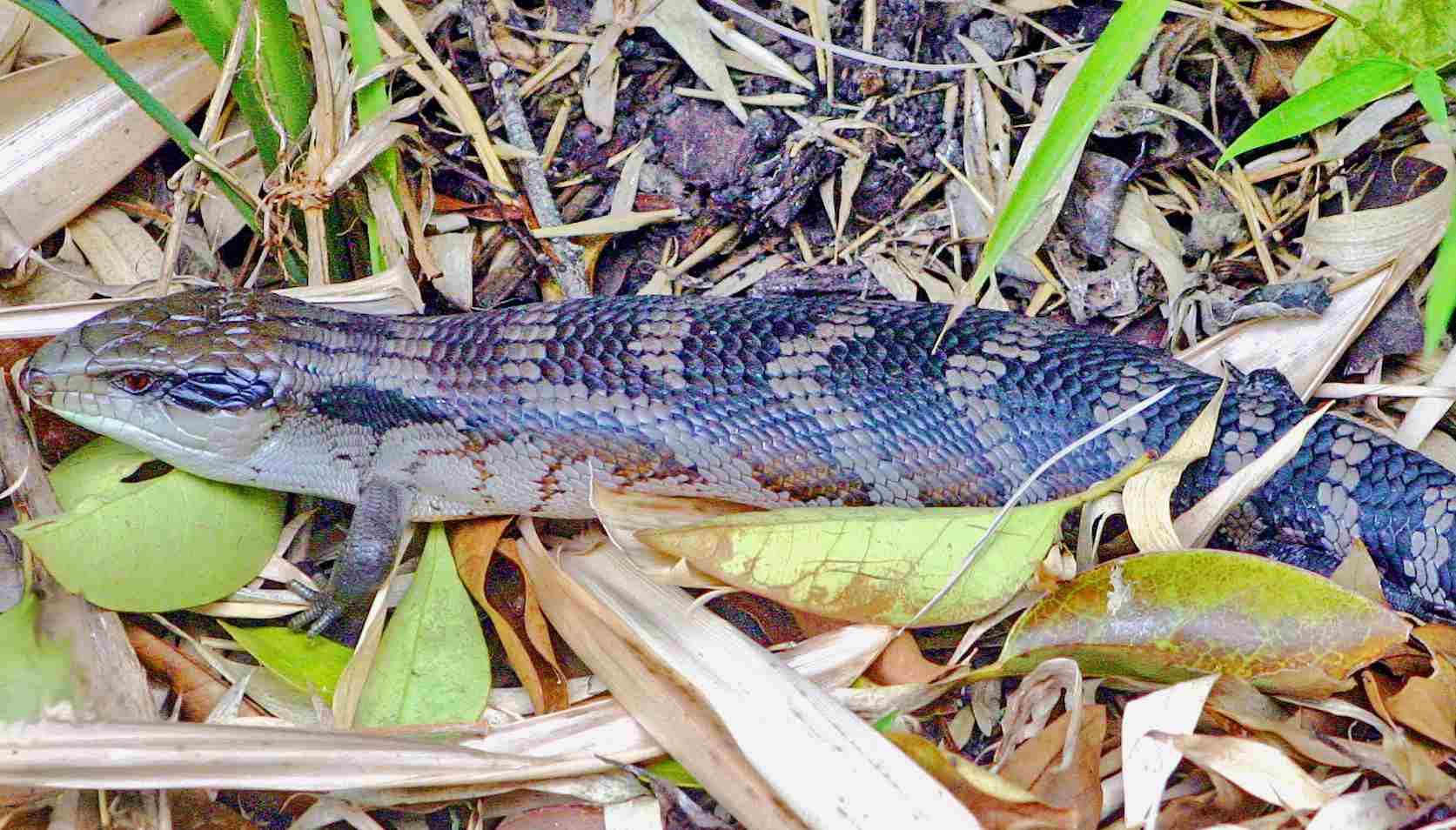
Are Lizards Carnivores, Herbivores or Omnivores?
Lizards are a diverse group of reptiles that exhibit a wide range of dietary preferences. They can be carnivores, herbivores, or omnivores, depending on their species and ecological niche. Let’s explore some examples of each category and the characteristics that define them.
Carnivorous lizards are characterized by their preference for a meat-based diet. Some examples of carnivorous lizards include varanids such as the monitor lizard, Gila monster, and Mexican beaded lizard. These lizards have sharp teeth and powerful jaws that allow them to capture and consume prey. They primarily feed on insects, small mammals, birds, and other reptiles. Their digestive systems are adapted to efficiently process animal protein, making them highly efficient predators.
On the other hand, herbivorous lizards primarily consume plant material. They are characterized by their specialized teeth and digestive systems that enable them to efficiently process plant matter. Some examples of herbivorous lizards include iguanid species and the prehensile-tailed skink. These lizards have broad, flat teeth that are well-suited for grinding plant material. They feed on a variety of plants, including leaves, fruits, flowers, and even succulent plants. Their herbivorous diet provides them with the necessary nutrients for their survival and growth.
Lastly, there are omnivorous lizards that have a more flexible diet, consuming both plant and animal matter. Many iguanid and agamid species fall into this category. These lizards have a relatively high ecological adaptability, allowing them to exploit a wide range of food resources. Their diet may include insects, small vertebrates, fruits, flowers, and vegetation. Omnivorous lizards often exhibit opportunistic feeding behavior, taking advantage of the food sources available in their environment. This flexibility in diet allows them to survive in habitats where food availability may be unstable.
Therefore, lizards can be carnivores, herbivores, or omnivores, depending on their species and ecological niche. Carnivorous lizards are characterized by their meat-based diet and predatory features. Herbivorous lizards have specialized teeth and digestive systems that enable them to efficiently process plant material. Omnivorous lizards exhibit a more flexible diet, consuming both plant and animal matter.
Conclusion
* In conclusion, this article has explored the various dietary preferences of lizards, including carnivorous, herbivorous, and omnivorous species.
* Carnivorous lizards, such as the monitor lizard, Gila monster, and Mexican beaded lizard, have sharp teeth and powerful jaws that allow them to capture and consume prey. They primarily feed on insects, small mammals, birds, and other reptiles. Their digestive systems are adapted to efficiently process animal protein, making them highly efficient predators.
* Herbivorous lizards, such as iguanid species and the prehensile-tailed skink, have specialized teeth and digestive systems that enable them to efficiently process plant material. They feed on a variety of plants, including leaves, fruits, flowers, and even succulent plants. Their herbivorous diet provides them with the necessary nutrients for their survival and growth.
* Omnivorous lizards, including many iguanid and agamid species, have a more flexible diet, consuming both plant and animal matter. They have a relatively high ecological adaptability, allowing them to exploit a wide range of food resources. Their diet may include insects, small vertebrates, fruits, flowers, and vegetation. Omnivorous lizards often exhibit opportunistic feeding behavior, taking advantage of the food sources available in their environment.
* It is important to note that the dietary preferences of lizards are influenced by their species and ecological niche. While some lizards have evolved to be specialized carnivores or herbivores, others have adapted to be more flexible in their diet as omnivores. This diversity in dietary preferences allows lizards to occupy various ecological niches and survive in different habitats.
* Overall, lizards can be categorized as carnivores, herbivores, or omnivores based on their dietary preferences. Carnivorous lizards are characterized by their meat-based diet and predatory features, herbivorous lizards have specialized teeth and digestive systems for processing plant material, and omnivorous lizards exhibit a more flexible diet, consuming both plant and animal matter.
* Understanding the dietary preferences of lizards is crucial for their conservation and management. It helps us comprehend their ecological roles and the impact they have on their respective ecosystems. By studying their feeding habits, scientists can gain insights into the overall health and functioning of ecosystems.
* Lizards exhibit a diverse range of dietary preferences, with some being carnivores, others herbivores, and some being omnivores. This diversity in diet allows lizards to thrive in various environments and play important roles in their ecosystems. Further research and conservation efforts are necessary to ensure the survival of these fascinating reptiles and the ecosystems they inhabit.
FAQs
1. Is a Lizard a Carnivore or Omnivore?
Lizards can be either carnivores or omnivores, depending on the species, ontogenic changes, and adaptation. Some lizards have a diet primarily composed of meat, such as insects, small mammals, and other reptiles. These carnivorous lizards have sharp teeth and strong jaws to help them capture and consume their prey.
On the other hand, there are lizards that have a more varied diet, including both plant matter and small animals. These omnivorous lizards have adapted to eat a range of foods, taking advantage of whatever resources are available to them. They may consume fruits, vegetables, flowers, and even carrion. The specific diet of a lizard can vary greatly depending on its habitat, size, and individual preferences.
2. What Lizard Eats?
Lizards have diverse diets that vary depending on their species, habitat, and size. So, what do lizards eat? The answer is not straightforward, as different lizards have different preferences. Some lizards are carnivorous, feeding on insects, small mammals, and other reptiles. Others are omnivorous, consuming a mix of plant matter and small animals.
Their diet may include fruits, vegetables, flowers, and even carrion. The specific food choices of lizards are influenced by factors such as their ecological adaptability, food availability, and opportunistic behavior.
3. Are Geckos Carnivores or Herbivores?
While most geckos are insectivores, feeding primarily on insects and small invertebrates, there are some species that have adapted to include plant matter in their diet.
These herbivorous geckos consume fruits, nectar, and even leaves. The dietary flexibility of geckos allows them to thrive in a variety of habitats and adapt to changing food availability.
4. Are Lizards Carnivores or Omnivores?
While most lizards are carnivores, there are some that are omnivorous. This means they consume both animal and plant matter. The classification of lizards as carnivores or omnivores is based on their feeding habits and digestive systems.
Carnivorous lizards primarily feed on insects, small vertebrates, and other animals. On the other hand, omnivorous lizards have a more varied diet, including insects, fruits, vegetation, and even carrion. The ability to adapt their diet allows lizards to survive in different environments and take advantage of available food sources.
5. Are Lizards Carnivores Yes or No?
Yes, most lizards are carnivores. Their diet primarily consists of insects, small vertebrates, and other animals. However, there are some lizards that are omnivorous, meaning they consume both animal and plant matter. The classification of lizards as carnivores or omnivores is based on their feeding habits and digestive systems.
Carnivorous lizards have adapted to hunt and consume prey, while omnivorous lizards have a more varied diet that includes insects, fruits, vegetation, and even carrion.
6. Is a Gecko a Herbivore, Carnivore, or Omnivore?
Geckos have diverse feeding habits, and their diet can vary depending on the species. While some geckos are primarily insectivores, feeding on a variety of insects such as crickets and mealworms, others are herbivores, consuming fruits, nectar, and plant matter.
Additionally, there are gecko species that exhibit omnivorous behavior, consuming both animal and plant-based food sources. This flexibility in diet allows geckos to adapt to different environments and food availability. Therefore, the classification of geckos as herbivores, carnivores, or omnivores depends on the specific species and their feeding preferences.

